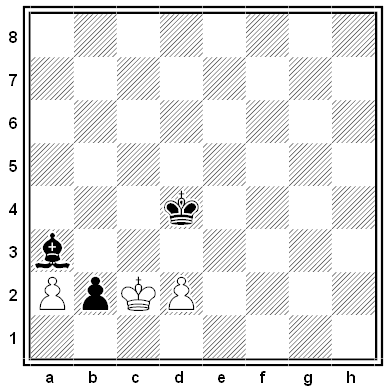
In S.S. Van Dine’s The Bishop Murder Case (1929), someone is killing chessplayers and leaving a black bishop at each crime scene. The prime suspect is John Pardee, promoter of a chess opening called the Pardee Gambit, which he hopes to establish in master play. But Pardee kills himself, despondent after losing to Akiba Rubinstein at the Manhattan Chess Club. It turns out that the real killer was only using the chess angle to throw suspicion onto others.
Van Dine based Pardee on a real person, Isaac Leopold Rice, who sponsored numerous tournaments in which his Rice Gambit was the required opening. But practice showed that the best White could hope for was a draw, and the line was abandoned after World War I. In 1979 Larry Evans wrote, “One of the most heavily analyzed openings in history is now never played, interred in a footnote of the latest opening manual.”
In the book, investigators determine that Pardee had faced the position above against Rubinstein shortly before his suicide. White has just realized that Black has a forced win in four moves. How does Black play?
